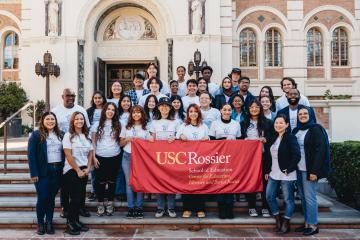
Ideas to Implementation: Engaging the community to evaluate an extended stay detoxification program in Pierce County, Washington

In the fourth part of J-PAL North America’s Ideas to Implementation blog series, Pierce County Human Services (PCHS), one of our 2024 LEVER Evaluation Incubator partners, reflects on how they incorporated community engagement in their randomized evaluation. Through community engagement practices, PCHS gained a better understanding of the different needs and perspectives of relevant stakeholders, identified potential challenges, and uncovered opportunities for ongoing collaboration during the implementation of a randomized evaluation of their extended stay detoxification program.
To start off, please tell us about the program PCHS is planning to evaluate and its evaluation goals.
The program we’re evaluating is aimed at improving the detoxification process for individuals with opioid use disorders in Washington State. Currently, individuals are approved to stay for up to five days in detox facilities. However, this duration has not been re-evaluated in years, despite drastic changes in the types of opioids in use, including the high prevalence of fentanyl.
Direct service providers in the detox field believe that extending the detox period could significantly benefit those seeking treatment. By allowing for a stay of up to ten days, individuals would have more time to stabilize, manage withdrawal symptoms, and prepare for the next steps in their recovery journey. Another key advantage of this extension is that it provides individuals with more time from their last episode of use, better positioning them to transition to rehabilitation after their detox stay. Our goal is to assess whether extending the days in detox improves health outcomes for those undergoing opioid detoxification.
We anticipate that a longer detox period will lead to better health outcomes, higher rates of successful transition to rehab, and ultimately, more sustainable recovery. By re-evaluating and potentially extending the detox duration, we aim to provide the best possible support for individuals undergoing treatment, helping them to build a solid foundation for their recovery journey.
Before starting this evaluation, were you familiar with the concept and framework of community-engaged research?
Pierce County was already familiar with the randomized evaluations that J-PAL North America focuses on, as we previously collaborated on an evaluation of an eviction prevention project. However, participating in several sessions led by J-PAL staff, along with consultant support, helped us become more familiar with effective strategies for fostering community engagement as we designed our Fentanyl Detox program evaluation. We believe that any opportunity to use data to support our investments in the community is invaluable. Additionally, we are committed to including the community in projects that will have an impact on them, ensuring their voices are heard and their unique needs are met.
How did the team incorporate community engagement into the Fentanyl Detox program evaluation design?
By engaging with individuals who have survived substance use, we identified their most pressing needs, which were taken into consideration in the planning process. Specifically, we shared information about the opioid settlement dollars coming into our community at recovery meetings and nonprofit organizations—places where those with lived experiences often go to seek services. We also provided time for them to voice their perspectives on what resources would have helped them during their recovery process.
As transparency is a crucial component of community engagement, we brought the community along with us through meetings at various nonprofits that host group sessions. During these sessions, we provided a brief overview of the program and then facilitated brainstorming discussions, writing participant feedback on large wall stickies. We wanted to maintain that momentum of meaningful engagement and incorporate their valuable insights into actionable steps for the Fentanyl Detox Program as we moved forward.
In addition, we worked closely with our Behavioral Health Advisory Board, which is composed of treatment providers, individuals with lived experiences, and subject matter experts, to develop an opioid spending plan that addresses the most pressing needs of the community. We believe that this transparency strategy not only built trust but also ensured that the community was included and valued in the process.
How has your perspective regarding including community engagement in research design changed after going through this process?
Initially, including the community was just an overarching thought. However, as we delved deeper, we realized the immense value in defining who the community was for this specific project. By refining our understanding of the community related to a detox facility, we changed our engagement strategies.
We are still working on what community engagement will look like in practice, but it will include people with lived experience, subject matter experts, and community members alike.
Given that the detox facility has been physically located in the community for a long time, extending the stay won't significantly impact the surrounding neighbors in the traditional sense. However, it will impact the community of providers and individuals attending rehab. In this instance, the important community members to bring along in the process have been the agencies working closely with folks in rehab and the patients in rehab themselves. Hopefully, in the long run, it will positively affect the broader community by contributing to a reduction in overdoses.
Do you see any other potential applications for community engagement in evaluation design beyond the work you’ve done so far?
We believe there is an opportunity to share more with the people of Pierce County about the process of designing evaluations and how it can help direct where our limited funding goes. By evaluating our contracts through an outcome-oriented lens and assigning clear metrics to each one, we can inform our community how their money is being spent, the benefits they are gaining from these investments, and the specific measurable outcomes achieved.
As we expand our community engagement efforts, we are now informing community members through various communication channels—such as social media, email, and our website, Open Pierce County—where they can access dashboards and metrics to stay updated about projects. Our communications team's efforts ensure accuracy and accessibility in information sharing to drive greater resident participation, reduce stigma, and foster a more informed and engaged community. Involving them in this journey ensures they understand the importance of these projects and feel a sense of ownership and involvement.
What advice do you have for other state and local agencies who may be interested in exploring community engagement in their programs?
The key takeaway is to start early by defining who your community is and what it would look like to involve them in the programs. It's essential to decide where in the project there are opportunities for community input and how that feedback will be incorporated. Finally, building and maintaining strong relationships with community members over time is crucial for meaningful engagement and long-term success.
Related Content

Ideas to Implementation: Developing a Theory of Change to evaluate mobile medications for opioid use disorders in Pierce County, Washington

Ideas to Implementation: How a research partnership can drive STEM equity and youth development in the City of Los Angeles


